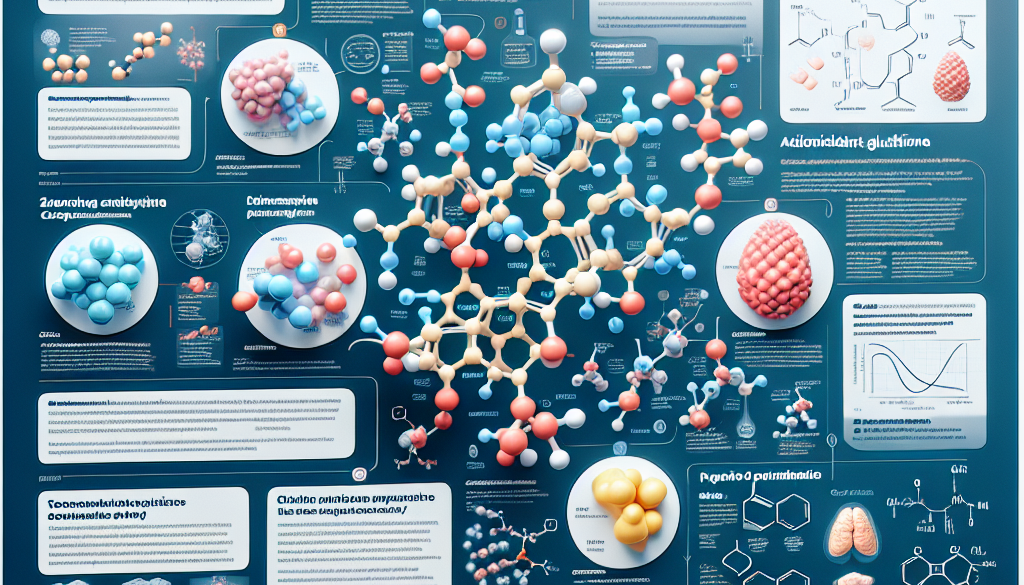Cystine Cysteine Glutathione: Key Facts
-
Table of Contents
- Cystine, Cysteine, Glutathione: Unveiling Their Vital Roles in Health
- Introduction to Cystine and Cysteine
- Cystine: The Stable Form
- Cysteine: The Active Participant
- The Antioxidant Powerhouse: Glutathione
- Functions of Glutathione
- Factors Affecting Glutathione Levels
- Interplay Between Cystine, Cysteine, and Glutathione
- From Cystine to Cysteine
- Glutathione Synthesis
- Recycling and Regulation
- Health Implications and Clinical Significance
- Antioxidant Defense and Disease Prevention
- Detoxification and Liver Health
- Immune System Support
- Implications for Aging
- Boosting Cysteine and Glutathione Levels
- Dietary Sources
- Supplementation
- Lifestyle Factors
- Conclusion: The Vital Trio for Optimal Health
- Discover ETprotein’s High-Quality Protein Products
Cystine, Cysteine, Glutathione: Unveiling Their Vital Roles in Health

Understanding the intricate world of amino acids and their derivatives is crucial for grasping how our bodies function at the molecular level. Among these, cystine, cysteine, and glutathione stand out for their unique roles in maintaining health and preventing disease. This article delves into the key facts about these compounds, exploring their functions, interrelationships, and the impact they have on our well-being.
Introduction to Cystine and Cysteine
Cystine and cysteine are closely related sulfur-containing amino acids, but they differ in their structure and how they function within the body.
Cystine: The Stable Form
Cystine is formed when two cysteine molecules are linked by a disulfide bond. This stable structure is found in many proteins and plays a critical role in maintaining their stability and function.
Cysteine: The Active Participant
Cysteine, on the other hand, is more reactive due to its thiol (sulfhydryl) group. It is involved in various metabolic processes and is a key component in the synthesis of glutathione, an essential antioxidant.
The Antioxidant Powerhouse: Glutathione
Glutathione is a tripeptide composed of cysteine, glutamic acid, and glycine. It is one of the most potent antioxidants produced by the body, protecting cells from oxidative stress and damage.
Functions of Glutathione
- Neutralizing free radicals
- Regenerating vitamins C and E
- Detoxifying harmful substances
- Supporting immune function
- Regulating cell proliferation and apoptosis
Factors Affecting Glutathione Levels
Several factors can influence the body’s glutathione levels, including:
- Diet and nutrition
- Exercise and physical activity
- Environmental toxins
- Stress
- Age
Interplay Between Cystine, Cysteine, and Glutathione
The relationship between cystine, cysteine, and glutathione is a dynamic one, with each playing a role in the synthesis and function of the others.
From Cystine to Cysteine
Cystine can be reduced to cysteine, which is then available for various metabolic processes, including the synthesis of glutathione.
Glutathione Synthesis
Cysteine is a rate-limiting precursor for glutathione synthesis. Adequate levels of cysteine are necessary to maintain optimal glutathione levels.
Recycling and Regulation
The body has mechanisms to recycle glutathione from its oxidized form back to its reduced, active form. This process is crucial for maintaining the antioxidant defense system.
Health Implications and Clinical Significance
The roles of cystine, cysteine, and glutathione in health and disease are vast and have been the subject of extensive research.
Antioxidant Defense and Disease Prevention
Glutathione’s antioxidant properties are essential for preventing cellular damage that can lead to chronic diseases such as cancer, heart disease, and neurodegenerative disorders.
Detoxification and Liver Health
Glutathione plays a significant role in detoxifying harmful substances, thereby supporting liver health and function.
Immune System Support
Glutathione enhances the immune system by promoting the proliferation of lymphocytes and the production of cytokines.
Implications for Aging
As we age, glutathione levels naturally decline, which may contribute to the aging process and the development of age-related diseases.
Boosting Cysteine and Glutathione Levels
There are several ways to support the body’s production of cysteine and glutathione:
Dietary Sources
- Whey protein
- High-sulfur foods such as garlic, onions, and cruciferous vegetables
- Protein-rich foods containing cysteine
Supplementation
Supplements such as N-acetylcysteine (NAC) can boost cysteine and glutathione levels and are used in clinical settings for conditions like acetaminophen overdose.
Lifestyle Factors
Maintaining a healthy lifestyle, including regular exercise and avoiding exposure to toxins, can help preserve glutathione levels.
Conclusion: The Vital Trio for Optimal Health
Cystine, cysteine, and glutathione form a vital trio that plays a crucial role in maintaining health and preventing disease. Understanding their functions and interrelationships helps us appreciate the complexity of our body’s biochemistry and the importance of supporting these compounds through diet, lifestyle, and supplementation when necessary.
Discover ETprotein’s High-Quality Protein Products
If you’re looking to enhance your health with protein supplements that support the production of cysteine and glutathione, ETprotein offers a range of premium products. Their organic, non-GMO, allergen-free proteins are ideal for boosting your intake of these critical amino acids.
About ETprotein:
ETprotein, a reputable protein and L-(+)-Ergothioneine (EGT) Chinese factory manufacturer and supplier, is renowned for producing, stocking, exporting, and delivering the highest quality organic bulk vegan proteins and L-(+)-Ergothioneine. They include Organic rice protein, clear rice protein, pea protein, clear pea protein, watermelon seed protein, pumpkin seed protein, sunflower seed protein, mung bean protein, peanut protein, and L-(+)-Ergothioneine EGT Pharmaceutical grade, L-(+)-Ergothioneine EGT food grade, L-(+)-Ergothioneine EGT cosmetic grade, L-(+)-Ergothioneine EGT reference grade and L-(+)-Ergothioneine EGT standard. Their offerings, characterized by a neutral taste, non-GMO, allergen-free attributes, with L-(+)-Ergothioneine purity over 98%, 99%, cater to a diverse range of industries. They serve nutraceutical, pharmaceutical, cosmeceutical, veterinary, as well as food and beverage finished product distributors, traders, and manufacturers across Europe, USA, Canada, Australia, Thailand, Japan, Korea, Brazil, and Chile, among others.
ETprotein specialization includes exporting and delivering tailor-made protein powder and finished nutritional supplements. Their extensive product range covers sectors like Food and Beverage, Sports Nutrition, Weight Management, Dietary Supplements, Health and Wellness Products, and Infant Formula, ensuring comprehensive solutions to meet all your protein needs.
As a trusted company by leading global food and beverage brands and Fortune 500 companies, ETprotein reinforces China’s reputation in the global arena. For more information or to sample their products, please contact them and email sales(at)ETprotein.com today.












